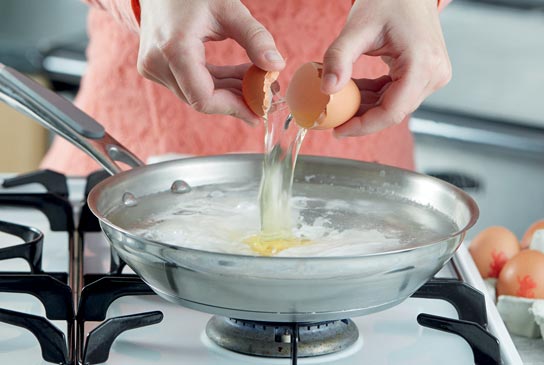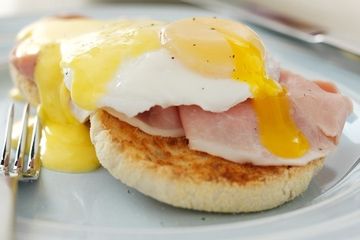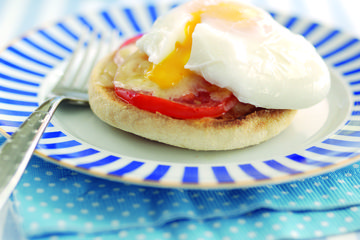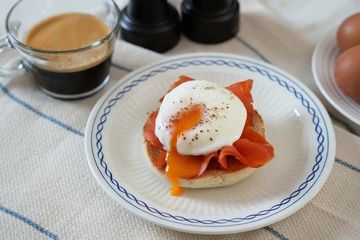How to poach an egg
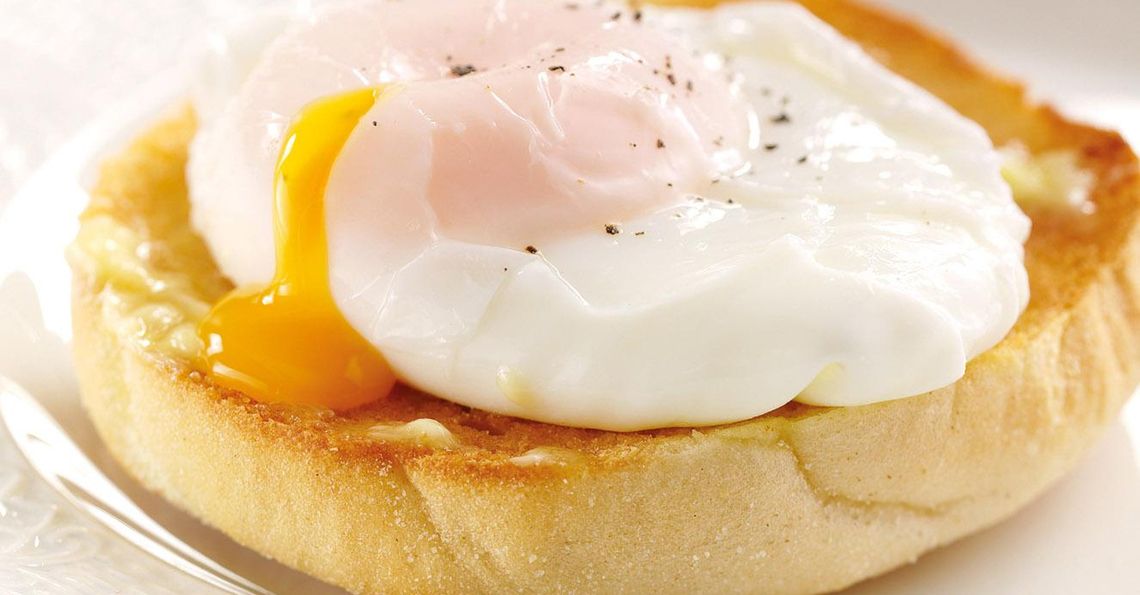
- Serves: 1
- Prep: 5 mins
- Cook: 5 mins
Uncover the secret to perfectly delicious poached eggs with this popular and flavourful classic recipe. Tuck into a smooth and runny egg inside a warm buttered bagel with Hollandaise sauce and mouth-watering slices of smoky bacon.
Ingredients
- 1 large British Lion egg
- Water for boiling
- Pinch of salt
- Dash of vinegar
Method
How to poach an egg:
- Use a deep, large pan to poach an egg. Fill it with plenty of water and add a pinch of salt and a dash of white wine vinegar. This will help set the egg.
- Bring the water to the boil and use a slotted spoon to create a whirlpool in the water. Crack the egg into the middle of the whirlpool. You may want to crack it into a ramekin first – using a separate vessel helps the egg keep its shape.
- Let the egg set for 3-5 minutes depending on how runny you want it. You can use a slotted spoon to take it out and lightly squeeze it to test. Crack the egg onto a plate and then tip it into the water. Time as follows. How long to poach an egg:
- 3 minutes for a completely runny yolk
- 4 minutes for a slightly set yolk with a runny middle
- 5 minutes for a firm yolk
4. Remove the poached egg from the boiling water using a slotted spoon and place on kitchen paper to drain.
Cooks tips
Young cook's tip: Serve on a warm buttered muffin, toast or bagel. Add spinach and hollandaise sauce for Eggs Florentine, or ham or bacon and hollandaise to make Eggs Benedict - both great brunch recipes!
| Calories | Protein | Fat | Saturates | Salt |
|---|---|---|---|---|
| 78 | 7.5g | 5.0g | 1.5g | 0.7g |
Perfectly poached eggs
Whether a total beginner or culinary connoisseur, easy poached eggs can be a part of everyone’s repertoire.
Knowing how to poach an egg is easy to master, and there are many different methods to try. One thing to remember is that the fresher an egg is, the easier it is to poach – so choose eggs with the latest best-before date on for poaching. This is because egg whites become more fluid the older they are which means they are more likely to disperse in the water once submerged. A spoonful of vinegar in the water can help with this, and will not change the flavour of your egg.
Soft or hard? This really is a personal choice; some people prefer their eggs to be runny (soft), others prefer cooked all the way through (hard) and some like something in between. There is no wrong or right way, although some people will argue to the bitter end with you on that point! The longer we poach an egg the more it will start to cook the yolk, so make sure to get your timings right if you don’t want to be disappointed!
Depending on which method of poaching you use, a saucepan lid may be required. If this is the case then make sure to maintain the temperature of the water within the pan. The initial temperature of the egg will also affect how long it will take to cook so remember that if you use your egg straight from the fridge it will take longer to cook.
Videos: How to poach an egg
British Lion eggs teach you how to make the perfect poached egg.
Click on the stars to rate this recipe:
